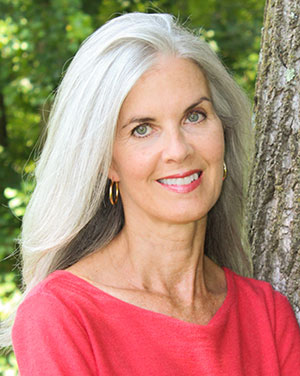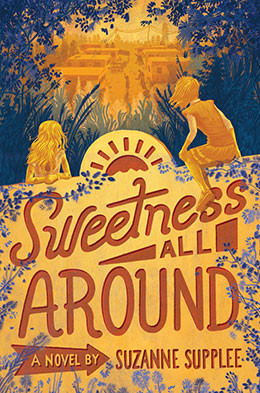Avi’s 2025 Summer Blog Series
Suzanne Supplee
From Avi: As I have for the last three summers, (summer of 2024, summer of 2023, summer of 2022) I’ve invited 13 admired authors to write for my blog for the next three months. I hope you’ll tune in each Tuesday to see who answered this year’s question, which we hope provides you with inspiration. And by the end of the summer, you’ll have new authors to follow!
What’s your favorite strategy for encouraging young people to read?
Growing Readers
Having been a high school and middle school writing and English teacher for decades, I’ve had an up-close view of students and their reading habits. I’ve taught kids who couldn’t stop reading. Seriously, even during class. Just imagine the heartbreak of having to tell a student to “put the book away.” (Insert sobbing emoji here.) Once I corrected a student about this very thing, and it turned out she was reading one of my books, as in, one I’d written.
Several years ago, I taught a sixth grader who would climb the school’s stairs, book in hand. It’s no surprise this same girl was an excellent writer and all-around successful student. She was a reader, after all. I didn’t make her a reader; her parents did that. Talented, dedicated writers held her attention. Librarians recommended books. Her friends, too, probably. It took a village. It still does.
Over the years I’ve taught many students who were like this sixth-grade girl; they loved reading. Having taught in both public and private schools (secondary and middle grades), I can honestly say there were devoted readers everywhere. There were also students who proudly told me, “I hate to read.” Yes, I said proudly.

While I understand firsthand the demands of a busy classroom, I think fun is equally as important as rigor, and reading should be a part of that fun. Yes, we teach books in the schoolhouse, but students view these as assignments. The books teachers and school systems select are required and therein lies the problem: students have zero say in the matter.
Rebellion is a natural part of adolescence. No matter how thoughtful book selections for the classroom are (trust me, I get just how thoughtful), students will likely resist, at least to some degree. Do our curriculums build a passionate love for reading? I highly doubt it. So, what are specific strategies for encouraging young people to read? Make reading something kids look forward to. Make reading a respite from the daily grind of school life. Make it fun.
In the last several years of my teaching career, I implemented a reading requirement. The requirement? Students were to pick a book, any book, and read it. If they didn’t like the book, pick another book. Can I read a graphic novel? students would ask. Yep. Can I pick a book on animals? Yes. Can I read Diary of a Wimpy Kid (likely for the sixth or seventh time)? You betcha. Can I read my mom’s spicy romance novel? Ask your mom. If she says yes, then it’s fine by me.

Reading for pleasure, it’s called. Occasionally, I’ve had to remind myself of this, too. Reading. For. Pleasure. That meant I couldn’t judge students’ selections. I couldn’t judge if they ended up hating a book and wanted to switch. I wasn’t permitted to judge, even if this happened several times. My only goal? Encourage kids to find a book they enjoyed and give them time to read it.
To set this up in my classroom, I arranged visits to our school’s library so students could make book selections. I also walked students through the process of getting a public library card. In addition, I stocked my classroom shelves with books and categorized them for easy access. Once a month we spent the entire class period dropping everything and reading. D.E.A.R. is the acronym you most likely remember.
Did I grade papers, answer emails, plan tomorrow’s lesson during this time? Given the demands of teaching life, I was sorely tempted, but I did not. To model the behavior I desperately hoped for in students, I read for the entire class period, too. At the beginning of the school year, some students fidgeted, and it was obvious sitting still was a struggle for a few of them. “You’re building muscles,” I would tell them. “If you play an instrument or a sport, you practice, right? This is you practicing.”
Over time students did build their reading muscles. At the end of the school year, I asked parents for feedback. Nearly all said they’d noticed a difference in their children’s ability to sit and read. The mom of one reluctant reader said she walked into his room and “caught him reading.” It’s a little like that movie Field of Dreams— “If you build it, they will come.” If you make a space for reading, kids will read. And if adults occupy this reading space with children, we demonstrate that reading is a worthwhile pastime.
This endeavor to get kids reading extended beyond my classroom, but I tried to keep the nuts and bolts simple. I created a basic reading log to help students keep track of their reading and meet the goals of the assignment. At the beginning of the school year, I started small, 10 days or so per month of reading for pleasure, preferably in 15 to 20-minute, uninterrupted sessions. Our classroom reading days counted for two sessions.
By the spring, we were up to 20 days of 15 to 20 minutes per session. I kept extra reading logs in my classroom and online. Students were free to get a second copy if they lost one. However, a few days before the log was due, I removed them from online and from our classroom to avoid last-minute stragglers who hadn’t actually read anything beyond our D.E.A.R. Day. While reading for pleasure was the goal, there were benefits for doing the assignment (easy points and stickers, anyone?) and consequences grade-wise if students didn’t do the assignment.

Students were required to sign an honor statement beforehand. Parents signed it, too. On the reading log, students wrote (yes, by hand) a brief summary of the book, basic information on the writer, and a few sentences about whether or not they’d recommend this book to classmates. In addition, there was a calendar so students could keep track. I even kept a log of days remaining on my white board in case students forgot or lost track of time.
During classroom D.E.A.R. Days, I would sometimes start with a quick video on the benefits of reading for pleasure. At the beginning of the year, I sent emails home to parents to explain the benefits of lifelong reading habits, complete with statistics. The goal was simple: get kids to read for fun and work toward parent buy-in. When you tell parents their kids will be happier, smarter, kinder, healthier, and more successful and you back this up with research, you aren’t likely to get pushback.
In addition to the statistics on reading benefits, I would also educate my students about the benefits of developing a growth mindset. We even watched Carol Dweck’s YouTube video so students could hear from the author herself. In case you aren’t familiar, Dweck is the author of Mindset: The New Psychology of Success.
According to Dweck, “The power of yet suggests that learning is a journey, not a destination.” Basically, I wanted students to apply the growth mindset to reading. With effort and practice, they had the power to improve their ability to sit and read for an extended period of time.
By middle school many kids come to the classroom with a fixed mindset. I’m good at math but not English, say, or I hate reading or I’m not popular (athletic, smart, etc.). If we teach children that they can strengthen their muscles in all sorts of ways, reading included, it gives them hope. In fact, it gives all of us hope.
When my own children, ages 35, 25, and 23, were growing up, my husband and I read to them. We read every single night. Our children grew up reading with us and watching us read. We went to the library. We purchased books. We talked about books. Books were a source of joy in our household, but this was not the case for me as a kid. This is where the record scratches. A writer who didn’t grow up a reader? Yep, that’s me.
My mom was not a reader. Neither was anyone in my family. There were very few books in our home, though we did have a set of Childcraft and Encyclopedias. No one in my family had been to college. Money was always an issue. I was not a reader. I was not a lover of books. I was not what we’ve come to expect from writers: a child who grew up with her nose in a book.
What changed reading for me (and very likely the course of my life) was a family friend. Her name was Margaret Harris, and she was elegant in every way. She went to our church, became friendly with my mother, and her husband was our family physician. Every Christmas Margaret gave me a book.
To be honest, I didn’t actually read these books, but I loved owning them and seeing them on my shelf. I loved the idea of reading them. Even so young I somehow understood books were important. What made me a reader? Margaret’s act of kindness, regular visits to my elementary school’s library, a couple of classroom teachers who read aloud to us every day after lunch, a small tape recorder into which I told my own stories, these things made me a reader. And a writer.
One teacher, one parent, one grandparent, one librarian, one family friend can encourage a reader. And if the child in your life or your classroom claims to hate reading, teach them about Dweck’s research on growth mindset. Tell them, “You don’t like reading. Yet.”
Particulars
Suzanne Supplee is the author of the middle grade novel, Sweetness All Around, and three young adult novels. She earned a bachelor’s degree from Southern Illinois University and a master’s in creative writing from Towson University. Suzanne taught creative writing for a number of years at a magnet high school in Maryland, work for which she was recognized as an Alliance for Young Artists and Writers Gold Medal Portfolio Educator, a Silver Medal with Distinction Educator, and a University of Chicago Outstanding Educator. When Suzanne isn’t grading papers or obsessing over her current work-in-progress, she is playing with her dogs, Birdie and Gus.

